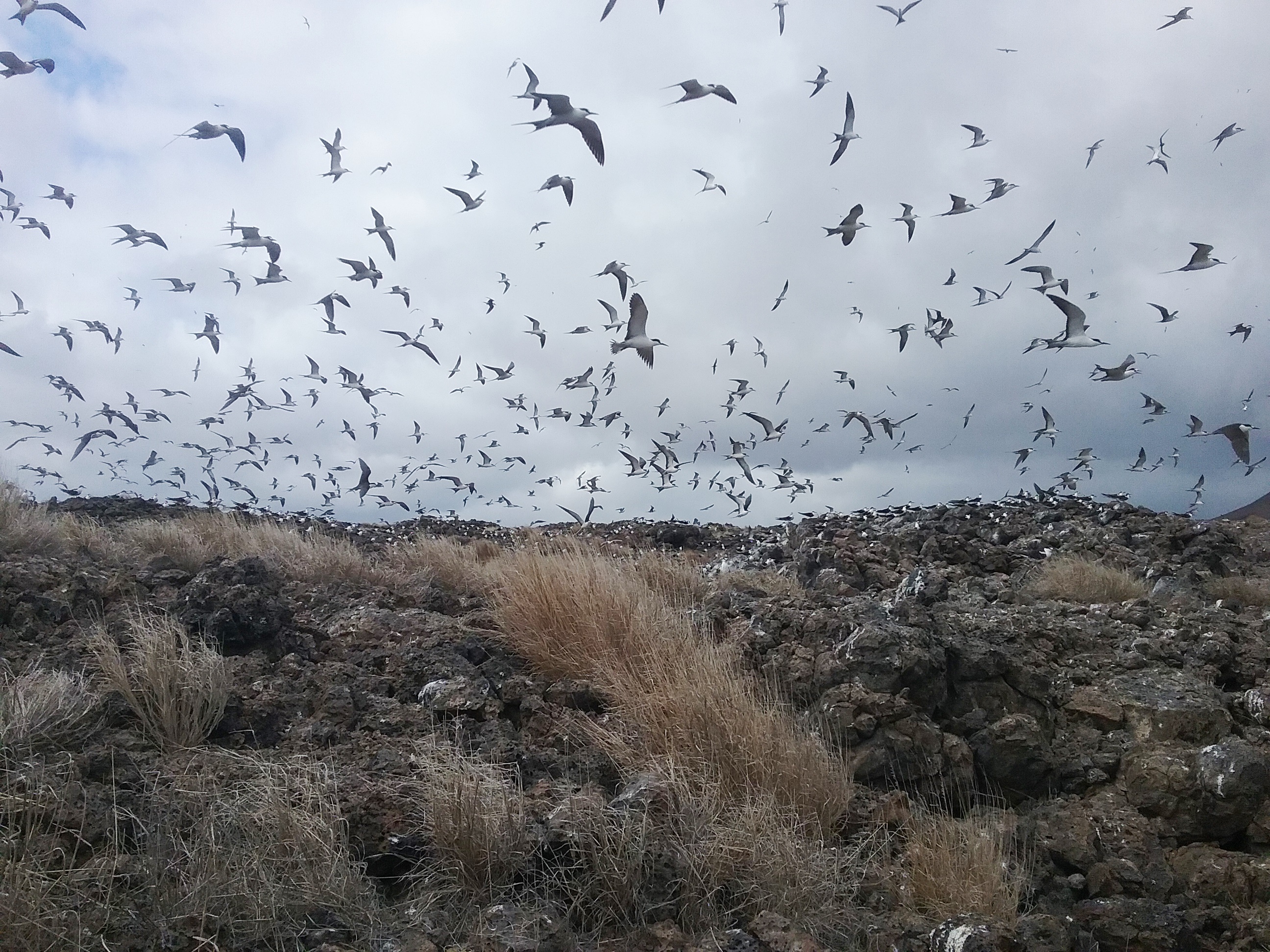Conservation > Explore the Island > Mars Bay

Mars Bay Nature Reserve is part of a rocky stretch of the south coast called the Wideawake Fairs. Sooty Terns will nest across the Fairs, with the majority of the colonies encompassed by the Mars Bay and Waterside Nature Reserves. Sooty Terns will spend months at sea between breeding seasons, but are one of the finest wildlife spectacles on the island when tens of thousands birds nest at once.
Mars Bay is not, as often thought, named for the Martian like terrain, but instead after an Royal Astronomical Societies expedition to Ascension undertaken in 1877 by Professor David Gill. His observations of the Opposition of Mars in the autumn of that year was fundamental to his research, two years later calculating the distance from the earth to the sun to within 0.2% of the modern value. He and his wife Isobel Gill lived in a basic camp in Mars Bay for several months, the paths and foundations of which can still be seen today. Isobel Gill would write of their experiences in a book titled "6 months in Ascension, an Unscientific Account of a Scientific Expedition" which as well as documented their expedition also provides insight into how daily life was like on Ascension in that time.
In the east of the Nature Reserve is a small beach called Shelly Beach. This can be reached by a rough track that crosses one of the youngest lava flows on the island. This track existed prior to 1877 when it was described by Isobel Gill in her writings; the purpose and maker unknown even then. Due to the nature of the currents around the island, a lot of flotsam will wash up on this beach. Unfortunately plastic litter, mainly large bottles and fishing gear, will also wash up on this beach in addition to driftwood and other natural debris. The marine conservation department conduct beach litter surveys, cataloging and removing plastic litter every three months.
Inland from Shelly beach you can find the Shelly beach pools. These saltwater, landlocked pools still have a subterranean connection to the sea, and are home to two endemic species that were discovered in 1970, a shrimp like creature and a green slime. To learn more about these Anchialine pools and the peculiar creatures that live there, explore our habitats section in Flora and Fauna.
You can find the following flora and fauna at the Mars Bay Bird Nature Reserve:
Type: Habitat | Status: Not Evaluated | Nativeness: Endemic
Anchialine pools are landlocked, saline bodies of water with a permanent, subterranean connection to the ocean but no surface contact.
Type: Endemic Plant | Status: Critically Endangered | Nativeness: Endemic
A perennial, dwarf shrub that forms low hemispherical domes, occuring on arid cinder plains and scoria cones at lower elevations.
Type: Seabird | Status: Least Concern | Nativeness: Native
A medium sized dark brown seabird with a white crest that blends into a grey neck. These birds are found around the island nesting on rocky outcrops and cliffs.
Type: Seabird | Status: Least Concern | Nativeness: Native
A medium-sized, highly pelagic seabird with contrasting black and white plumage and a distinctive ‘wideawake’ call. These birds congregate on part of the South-West coast of the island known as the Wideawake Fairs.
